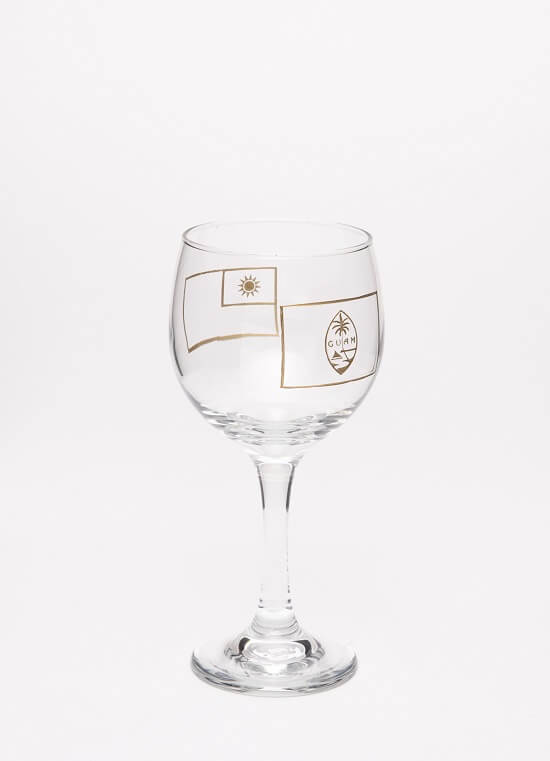
.jpg)
All about Logos—A Special Exhibition of U.S. Seals
In all ancient civilizations around the world, symbols or colors were often used to represent individuals or organizations before the origin of written language.
Updated at 2022-07-08
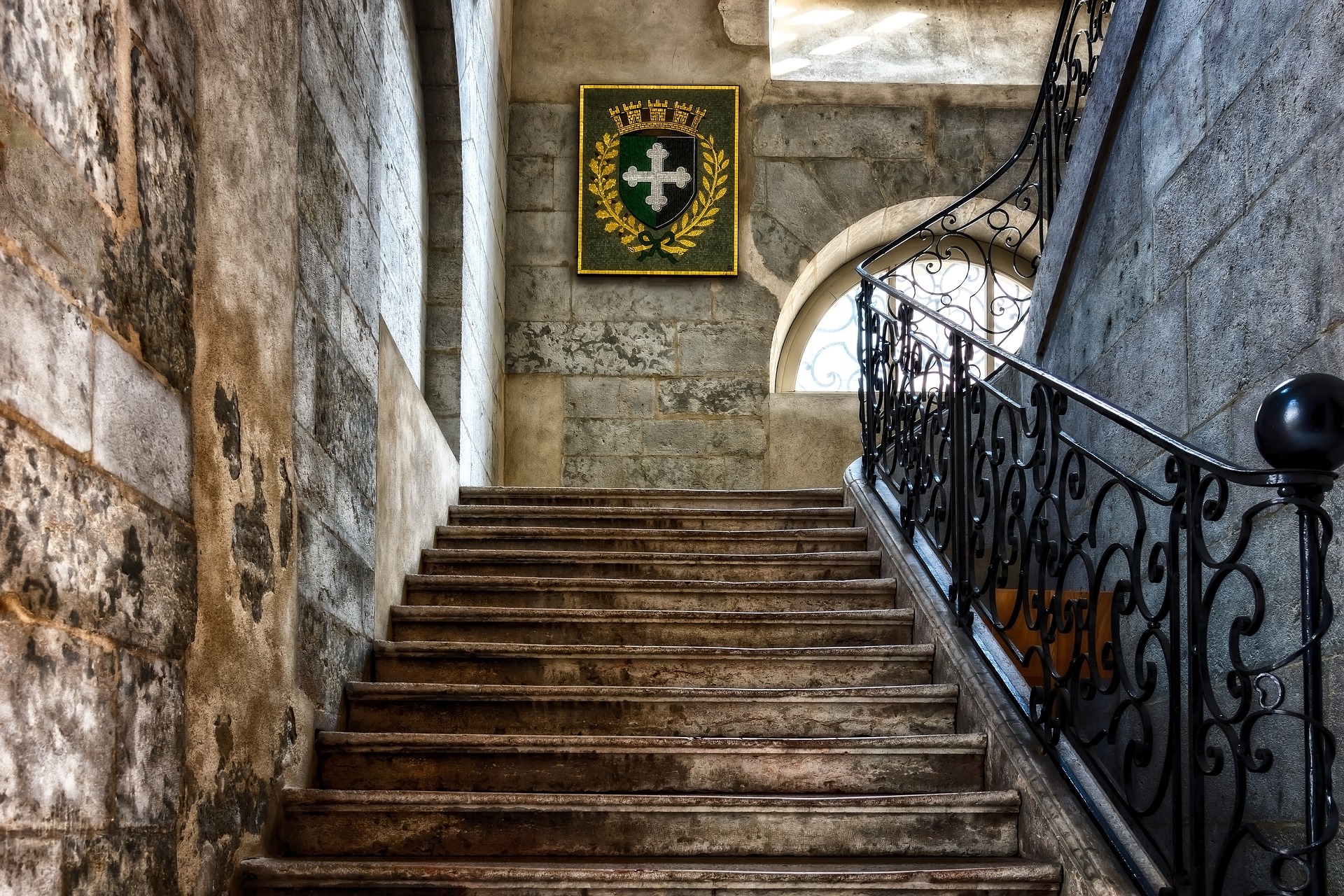
In all ancient civilizations around the world, symbols or colors were often used to represent individuals or organizations before the origin of written language. Heraldry began to truly take form in medieval Europe, maturing over the centuries. Feudalism began in medieval Europe. In the 12th century, feudal lords and knights often used coats of arms in battle and at tournaments for identification purposes. By the 13th century, coats of arms became symbols used by the upper class and prominent families. Subsequently, coats of arms became symbols of national and religious power. As heraldry became more prominent over the years, the colors, symbols, silhouette, composition, and images used in emblems all bear different meanings. Even in modern times, when information transmission is fast and convenient, emblems still serve the same functions that they did centuries ago.
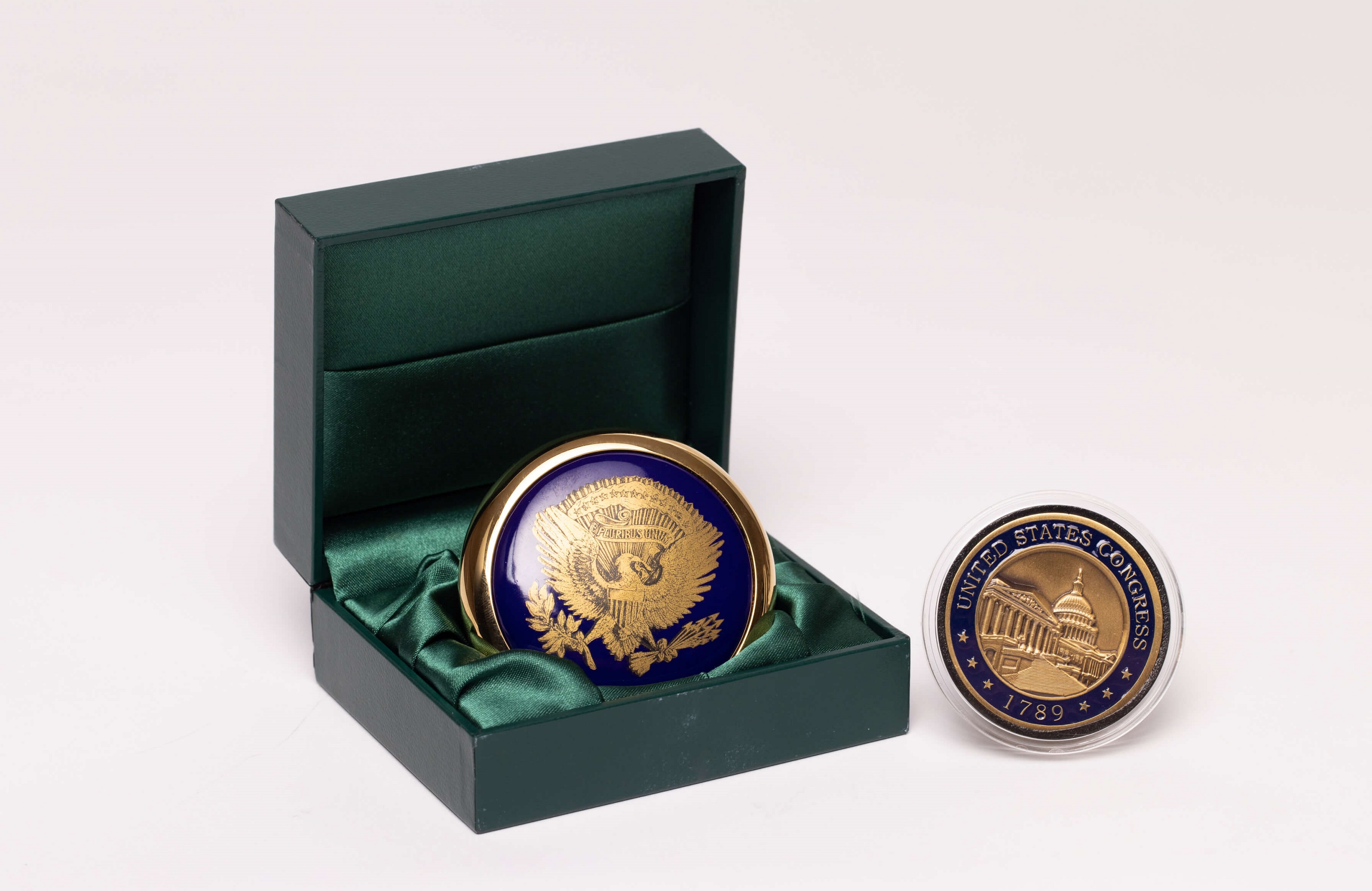
The Presidential Seal paperweight and Congressional Seal of the United States
On the left side of the photo is a paperweight with the U.S. Presidential Seal. The design concept of the Presidential Seal derives from the Great Seal of the United States. Historically, the Presidential Seal was used for communication between the Oval Office and Congress and served as a symbol of the president's authority.
The main design of the Presidential Seal is a bald eagle with its wings spread open. The bald eagle symbolizes power, freedom, and courage of the United States. The eagle’s right talon clutches an olive branch with 13 olives and 13 leaves to represent peace. The left talon clutches arrows, which represent the need sometimes to go to war to protect the nation. Together, the contents held in the eagle’s left and right talon indicate that the American people desire peace yet do not fear war. The eagle holds a ribbon bearing the words “E Pluribus Unum,” a Latin motto that means “out of many, one.” The number 13 on the shield in front of the eagle is used to represent the 13 original colonies. The blue bar above the shield represents both Congress and the nation, as well as the cohesion between the 13 colonies. Above the eagle is a halo of gold. In it are 13 white clouds and 13 stars. Scattered outside of the clouds are many tiny stars that represent the states that later on joined the federation.
Interestingly, the emblem on the paperweight isn’t the same as the current Presidential Seal. In 1945, toward the end of the Second World War, President Harry Truman ordered that the eagle be changed to face the olive branch, rather than the arrows, to emphasize on the pursuit of peace. In fact, Truman had also proposed adding rays of light to the arrows held in the eagle’s left talon to represent the United States’ nuclear prowess, but this idea was later scrapped.
On the right side of the photo is the Seal of the United States Congress. Presented in the center of the badge is not the Capitol but a schematic diagram of the west wing of the United States Capitol. The U.S. Capitol Building derives from “Capitoline Hill” (Latin: Collis Capitolinus), the highest of the seven hills of Rome and an important religious and political center during the founding days of Rome. “Capitol” and “capital” also share the same root, a nod to the emphasis on democracy and republic during the classical age. The U.S. Capitol is a neoclassical building made of white marble, with an iconic dome and symmetrical two-wing halls. The north wing is the U.S. Senate, while the south wing is the U.S. House of Representatives. On top of the dome sits the 6-meter-high bronze Statue of Freedom.
Gifted by Ian Paul Steff, Deputy Assistant Secretary, Commerce for Manufacturing
<Read More "U.S. National Emblem and Commemorative Badge">
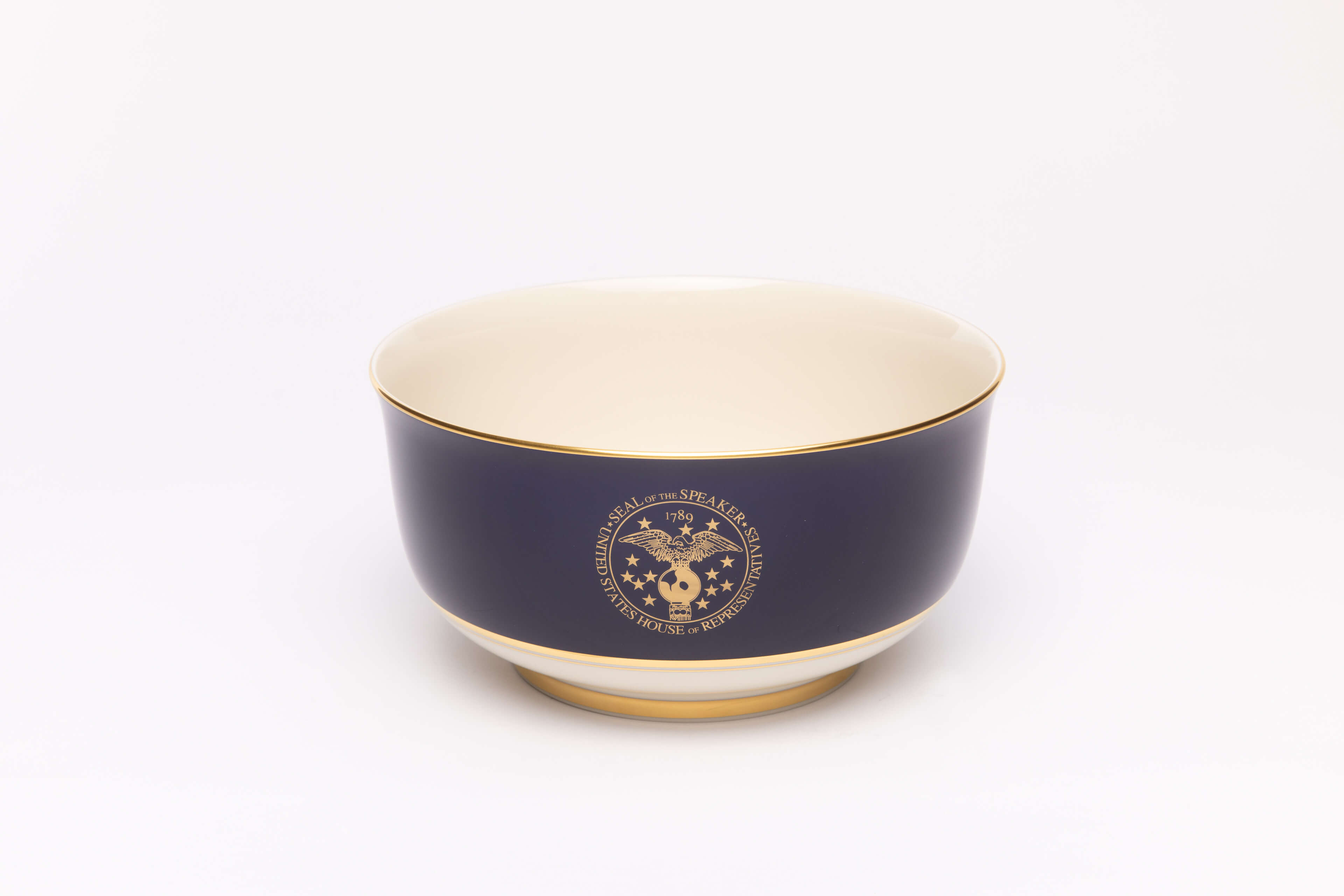
The Seal of the Speaker
The Hall of the House of Representatives is located in the south wing of the Capitol. The Seal of the Speaker dates to the tenure of Representative John William McCormack, who served as Speaker from 1962 to 1971. The eagle sitting atop the globe comes from the Mace of the United States House of Representatives. The Mace, inspired by the Roman fasces, is 120 centimeters in length. It is made of ebony rods, bound together with silver bands. At the top of the Mace sits a ball of silver, on top of which perching a silver eagle. The Mace has a long history. The year “1789” is marked on the Seal of the Speaker, marking the first time Congress was convened. The 13 stars on the seal represent the 13 original colonies.
Gifted by Nancy Pelosi, House Speaker
<Read More "U.S. Congress Memorial Porcelain Bowl">
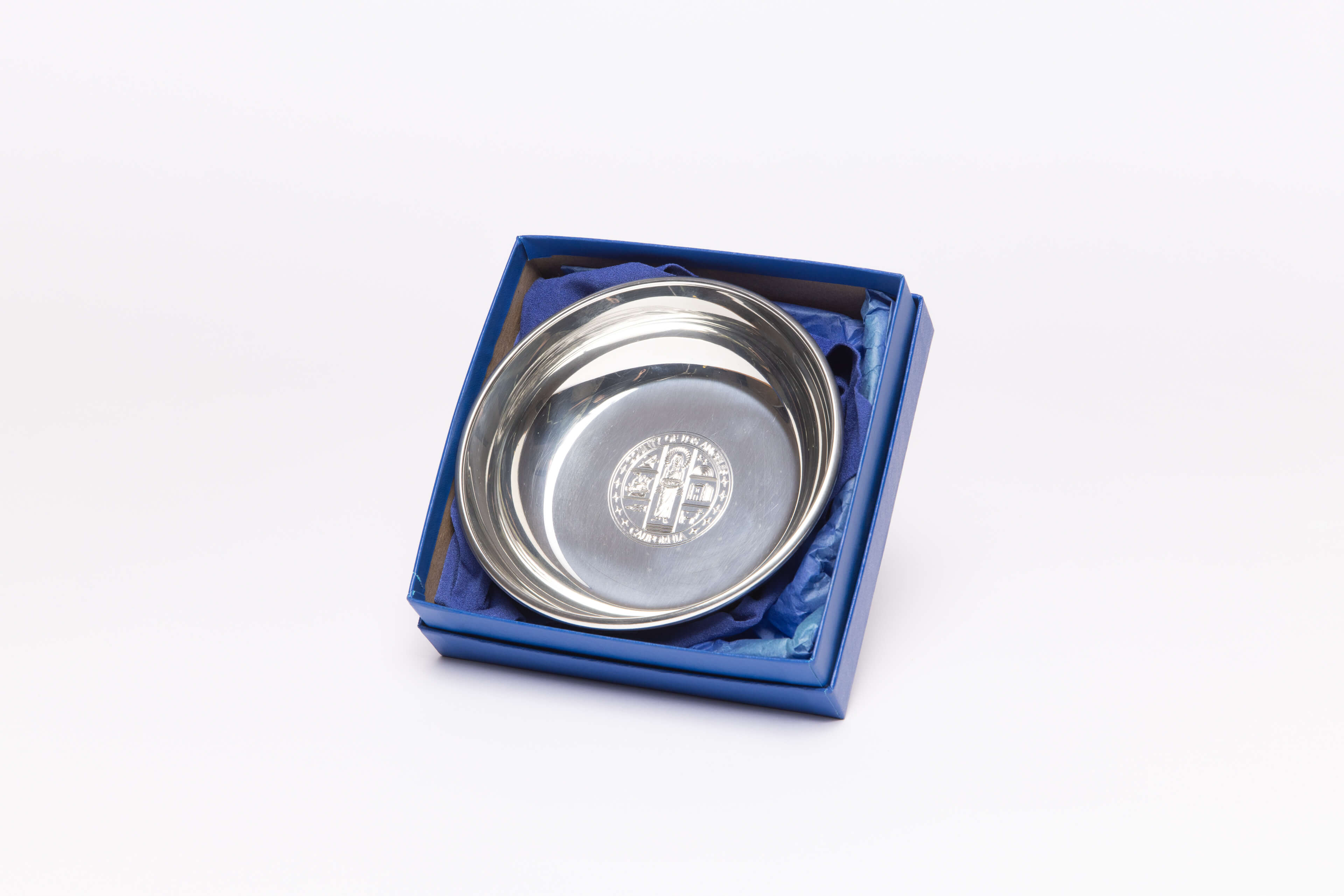
Seal of Los Angeles County, California
In the Seal of Los Angeles County, California, stands a Native American woman who represents the early inhabitants of the Los Angeles Basin (now LA County). She stands on the shore of the Pacific Ocean with the San Gabriel Mountains in the background.
The engineering instruments in the upper left corner are the triangle and the caliper, representing the industrial prowess of the area. The Spanish galleon to the center-left is the San Salvador, the ship sailed by Juan Rodríguez Cabrillo, the first European explorer to set foot on the west coast of the U.S. The tuna in the bottom left corner and the cow in the bottom right corner respectively represent LA County's prosperous fisheries and animal husbandry industry. The Hollywood Bowl in the top right corner symbolizes the cultural industry, while the two stars at the top represent the motion picture and television industries. In the center-right is Mission San Gabriel, founded in 1771, representing the historical role of the missions in the settlement of the Los Angeles region.
Gifted by Kathryn Barger, Supervisor, Los Angeles County
<Read More "Los Angeles Commemorative Silver Bowl">
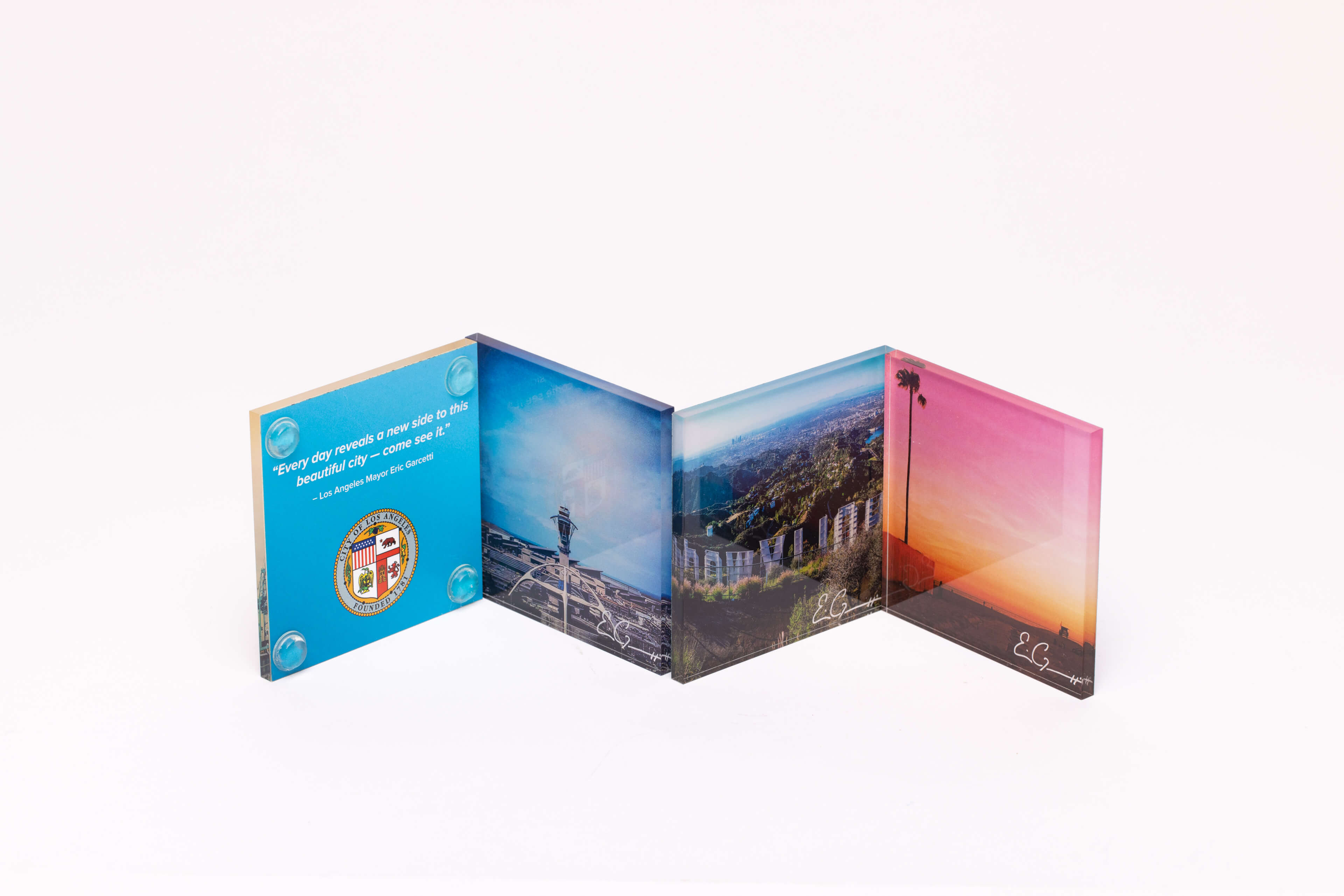
Seal of Los Angeles, California
Los Angeles is the largest city on the west coast of the United States and the second-largest city overall. The coat of arms in the center of the seal displays four different images representing four different stages of Los Angeles' history.
The 1st quarter displays the stars and stripes of the American flag signifying its status as a city in the United States of America since 1848. The 2nd quarter displays the grizzly bear flag of California, signifying its history as part of the California Republic from 1846 to 1848. The 3rd quarter displays the eagle holding a serpent from Mexico's coat of arms signifying Mexican rule from 1822 to 1846. The 4th quarter displays the Castile and León from Spain's coat of arms signifying Spanish colonial rule from 1542 to 1821. Castile and León is now Spain’s largest autonomous zone.
Gifted by William Chun, Deputy Mayor, City of Los Angeles
<Read More "Los Angeles Cityscape Coasters">
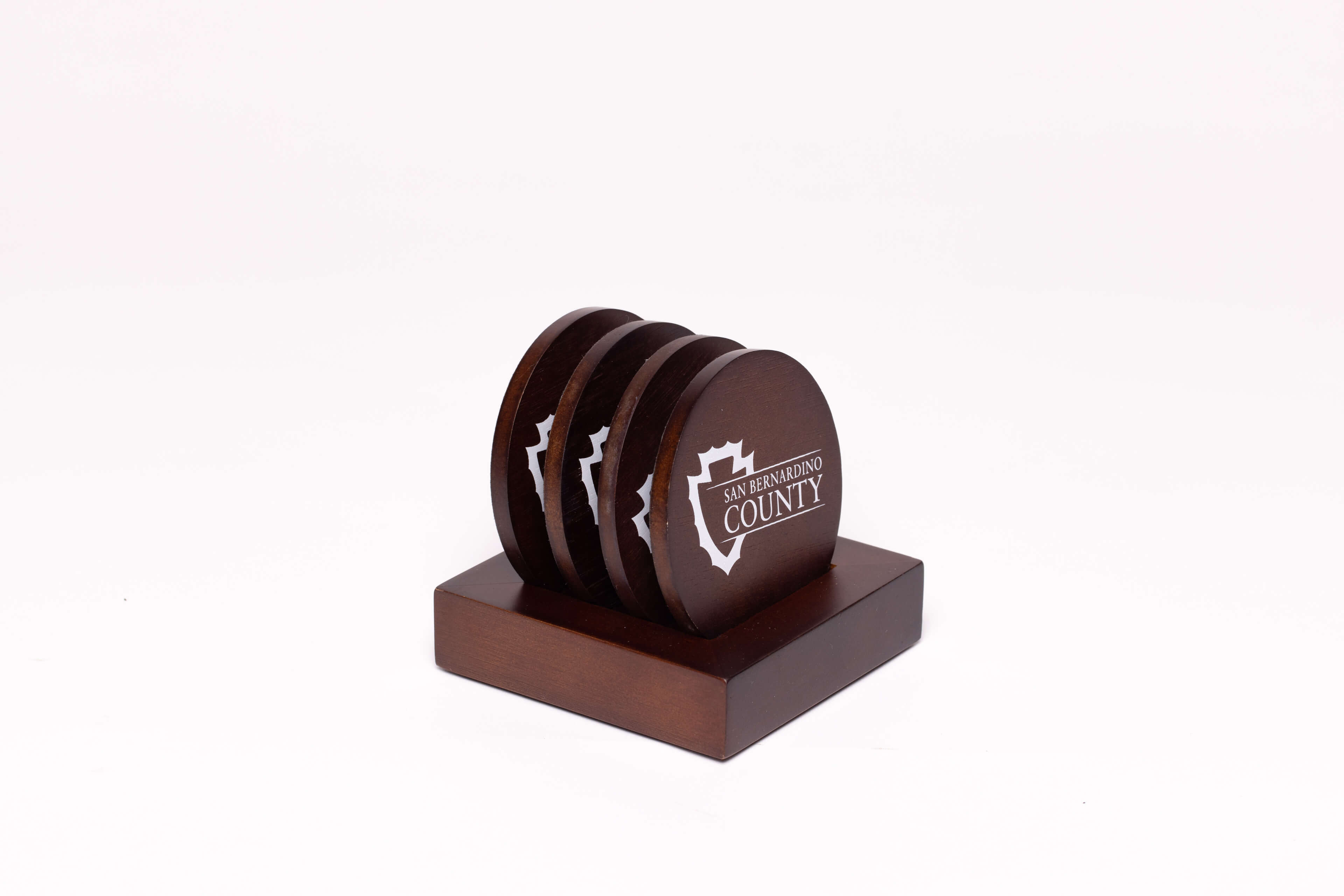
Logo of San Bernardino County, California
Located east of Los Angeles, San Bernardino County is the largest county in California. In 2014, the San Bernardino County government introduced a new coat of arms. It replaced the less colorful former logo established in 1984. The current logo adopts a simplistic design, with gold and dark blue tones. Both the old and new designs continued to use the arrowhead as a symbol of the county.
To the left of the seal is a large arrow, which represents Arrowhead Springs, the most famous geographic landscape in San Bernardino County. Looking up from San Bernardino Valley, one will see a mountain face covered in trees and a gigantic, 1,375-foot tall and 449-foot-wide arrow pointing to a well-known local hot spring. This massive arrow has been mentioned in historical documents as early as the 19th century, and the specific origin of the arrow remains unknown. According to local legend, the Native Americans who discovered the curative hot spring cut down trees and left an arrow symbol in the valley to mark the location of the hot spring. In fact, this arrow is just a natural geological formation.
Gifted by Curt Hagman, Vice Chairman, SBC Board
<Read More "San Bernardino Coasters">
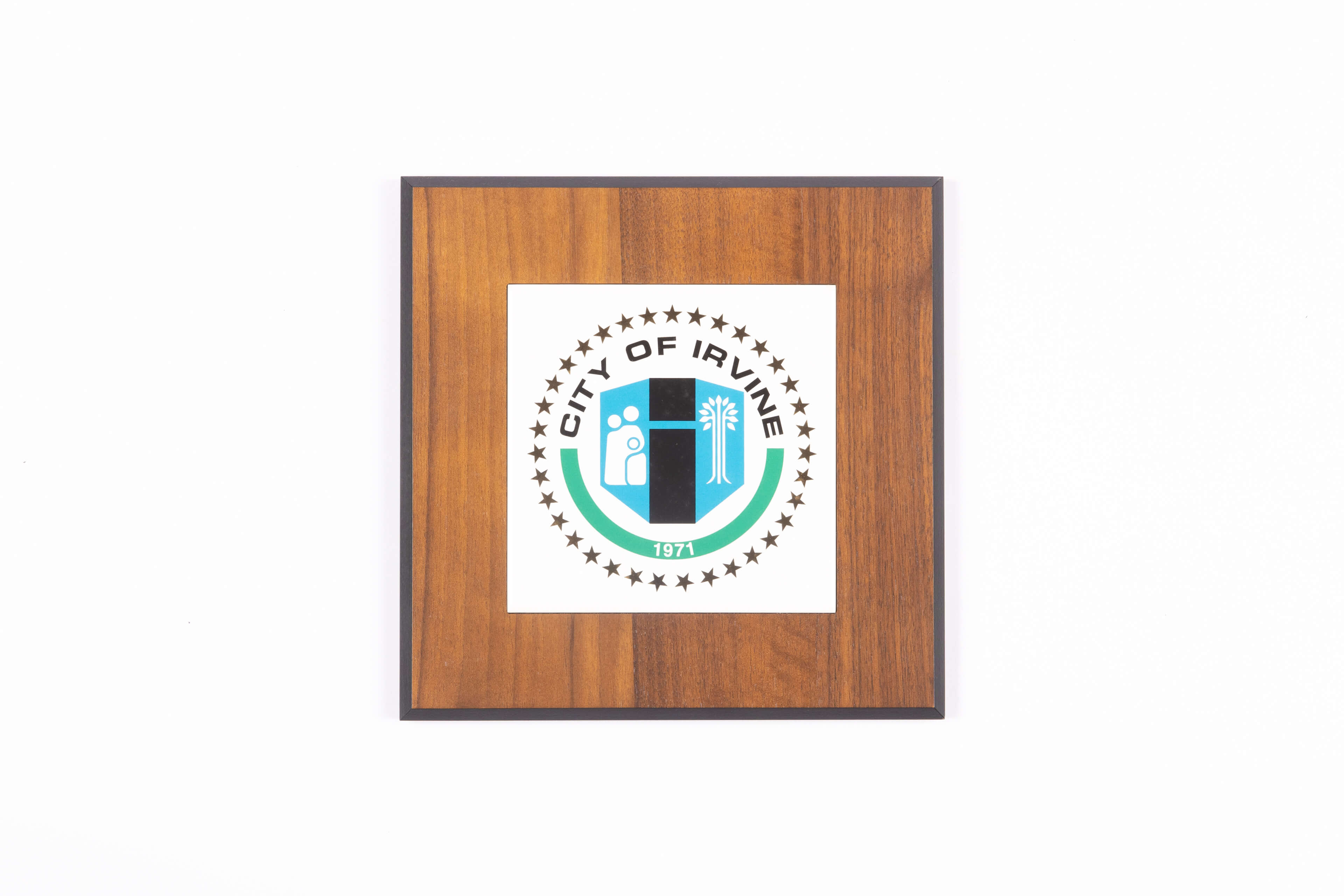
Logo of the City of Irvine, California
Irvine is a city in California, roughly an hour's drive from Los Angeles. The area was initially named Irvine Ranch during Mexican rule. However, the area gradually developed into a city after establishing the University of California and officially became Irvine City in 1971. On the left of the coat of arms for the City of Irvine stands three figures, indicating that Irvine is a family-friendly city. On the right side of the logo is some asparagus. As the official vegetable of the City of Irvine, it pays tribute to the agricultural history of this area. The giant black "i" in the middle of the logo is for “Irvine.” At the bottom of the logo is “1971,” the year that Irvine was founded.
Gifted by Donald Wagner, Mayor, City of Irvine
<Read More "Irvine Plaque">
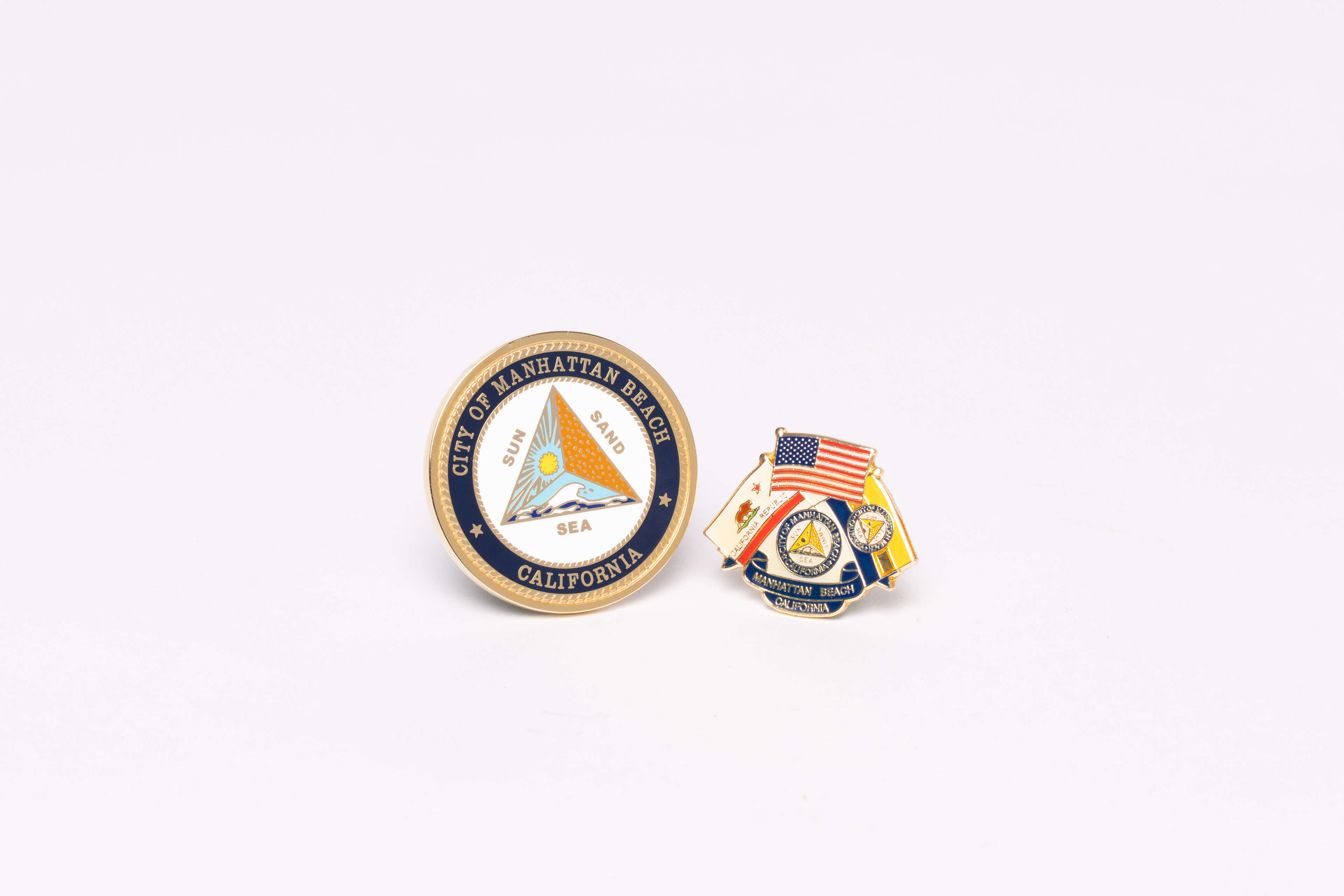
Logo of Manhattan Beach, California
As the name suggests, Manhattan Beach is a coastal city on the west coast of the United States that is known for its sun, beach, and ocean. The emblem of Manhattan Beach fully reflects the charm of the city. It is an equilateral triangle with an image of the sun, beach, and ocean. In 2019, Manhattan Beach adopted a new logo, which features the silhouette of a pier.
Gifted by David Lesser, Mayor, City of Manhattan Beach
<Read More "Manhattan Beach Emblem Badge">
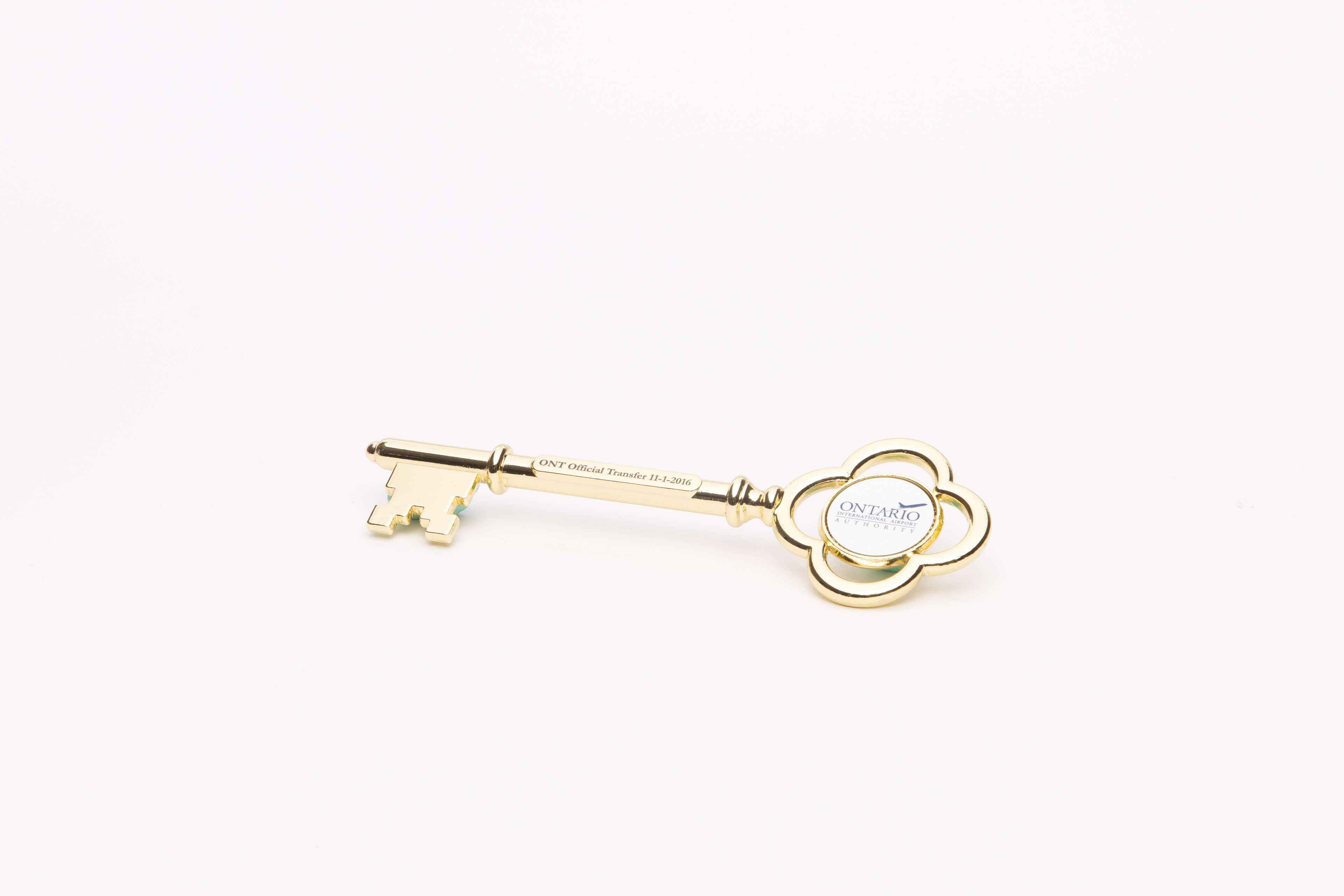
Ontario Airport Transfer Commemorative Key
The Ontario on the key in the picture may not be the Ontario you think about. Ontario International Airport is not located in Ontario, Canada. Rather, it's in Ontario, California, in the United States. Ontario International Airport is located on the east side of Los Angeles and has been managed by the Los Angeles City Council since 1976. Following comprehensive negotiations, airport management was handed back to Ontario in 2015. The key is a symbol of the transfer of power. Ontario International Airport updated its logo in 2017. The logo in the image is the old version. In the new logo, “ONT” in “ONTARIO” is in dark blue, while the rest of the letters are in a lighter shade of blue, highlighting Ontario International Airport’s code, “ONT.”
Gifted by Alan Wapner, President, Ontario International Airport Authority
<Read More "Ontario Airport Transfer Commemorative Key">
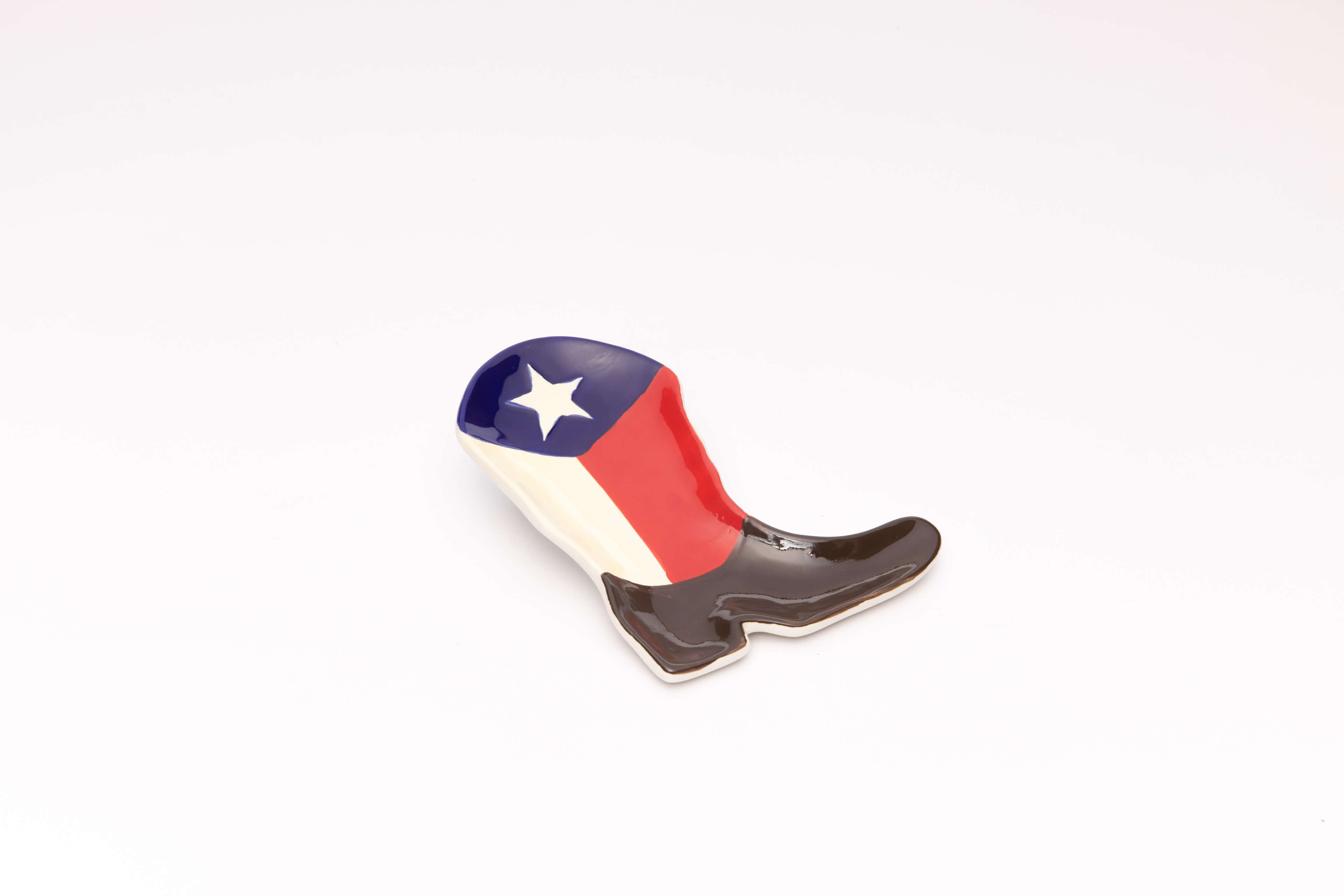
Flag of Texas
Texas was once under the rule of Mexico. The Republic of Texas was established after the declaration of independence. The flag has a single yellow star on a blue background. Therefore, Texas was often referred to as the “Lone Star Republic.” The Republic of Texas joined the United States in 1845, becoming the 28th state. It became known as the Lone Star State, and its flag was named the Lone Star Flag. The flag was redesigned to resemble the American flag, with a blue base and a white star. About one-third of the flag is in blue. On the blue side of the flag sits a lone, white star. The remainder of the flag is made up of a white upper half and a red lower half.
Because Texas joined the Confederacy as an independent nation, it is the only state that can fly its flag, the Lone Star Flag, at the same height as the U.S. flag. Americans are proud of their flags, and the Star-Spangled Banner is often seen at a variety of events. However, Texans value the Flag of Texas just as much as the U.S. flag, and the Lone Start Flag is a common decoration for many Texas homes.
Gifted by Tzi-Pin Liao, Chairman, North Texas Collin County Taiwanese Chamber of Commerce
<Read More "Ceramic Cowboy Boot">
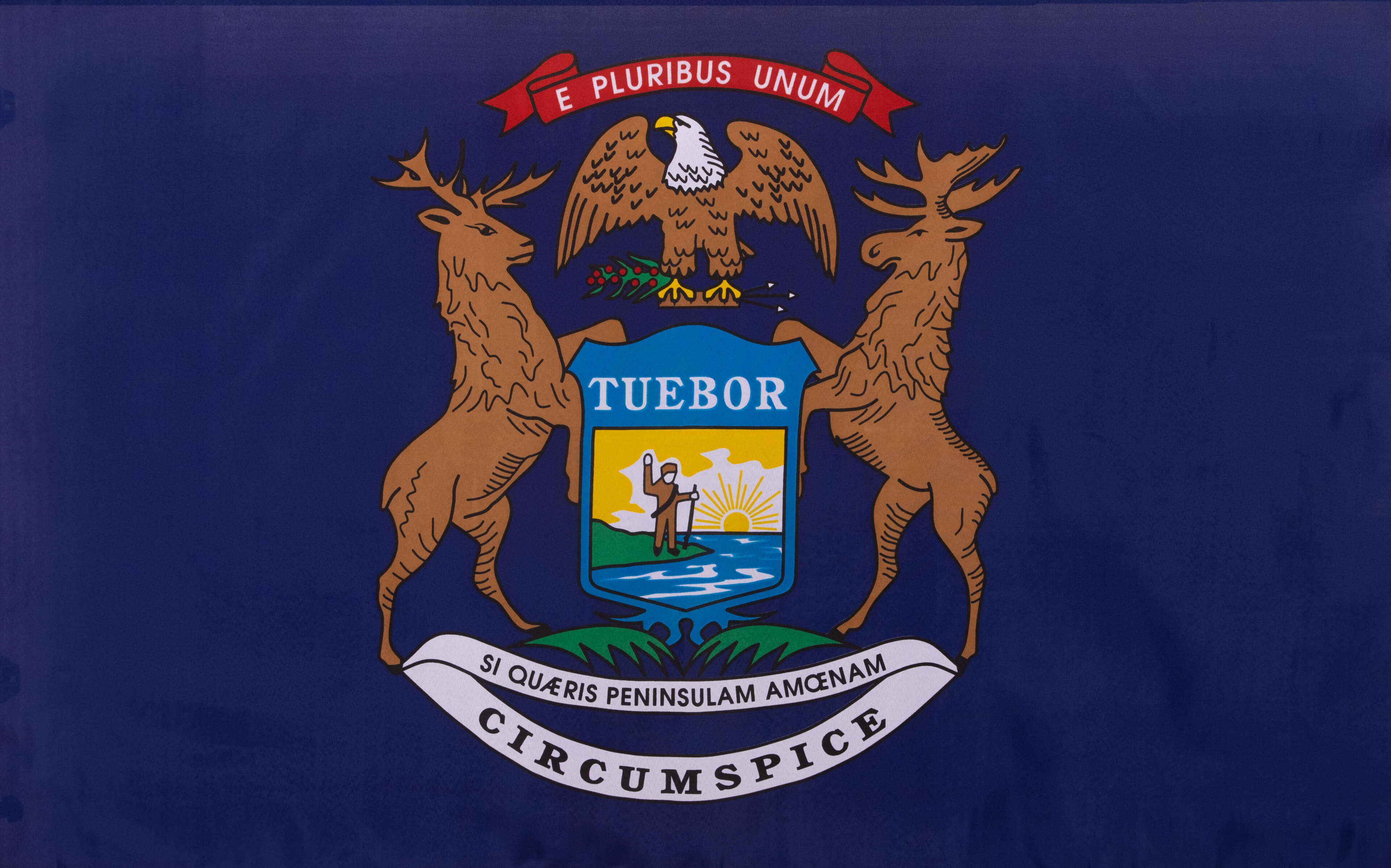
Flag of Michigan
Michigan's flag was designed by Lewis Cass, Michigan's second territorial governor. It has been in use since 1835.
At the top of the flag sits the American Eagle, a design derived from the Great Seal. This symbolizes the superior authority and jurisdiction of the United States. This dark blue flag features the light blue coat of arms of Michigan. On the shield, there is a sun rising slowly between the lake and the peninsula, and a soldier raising a rifle, holding the barrel of the gun in one hand, and the other hand is holding up a gesture of peace, symbolizing yearning for peace, but no fear of defending territory by force. The shield also reads "Tuebor (I will defend)" in Latin, elements that underline Michigan's status as a national frontline due to its proximity to Canada to the north.
The shield is held by two animals representing Michigan, the elk on the left and the moose on the right. The seal was patterned after the seal of the Hudson Bay Fur Company, which played a key role in the development of North America. At the bottom of the flag is a banner that reads "Si Quaeris Peninsulam Amoenam Circumspice," which means, "If you seek a pleasant peninsula, look around you."
Gifted by June Lee, Chief Operating Officer, Wayne County Airport Authority
<Read More "Flag of Michigan">
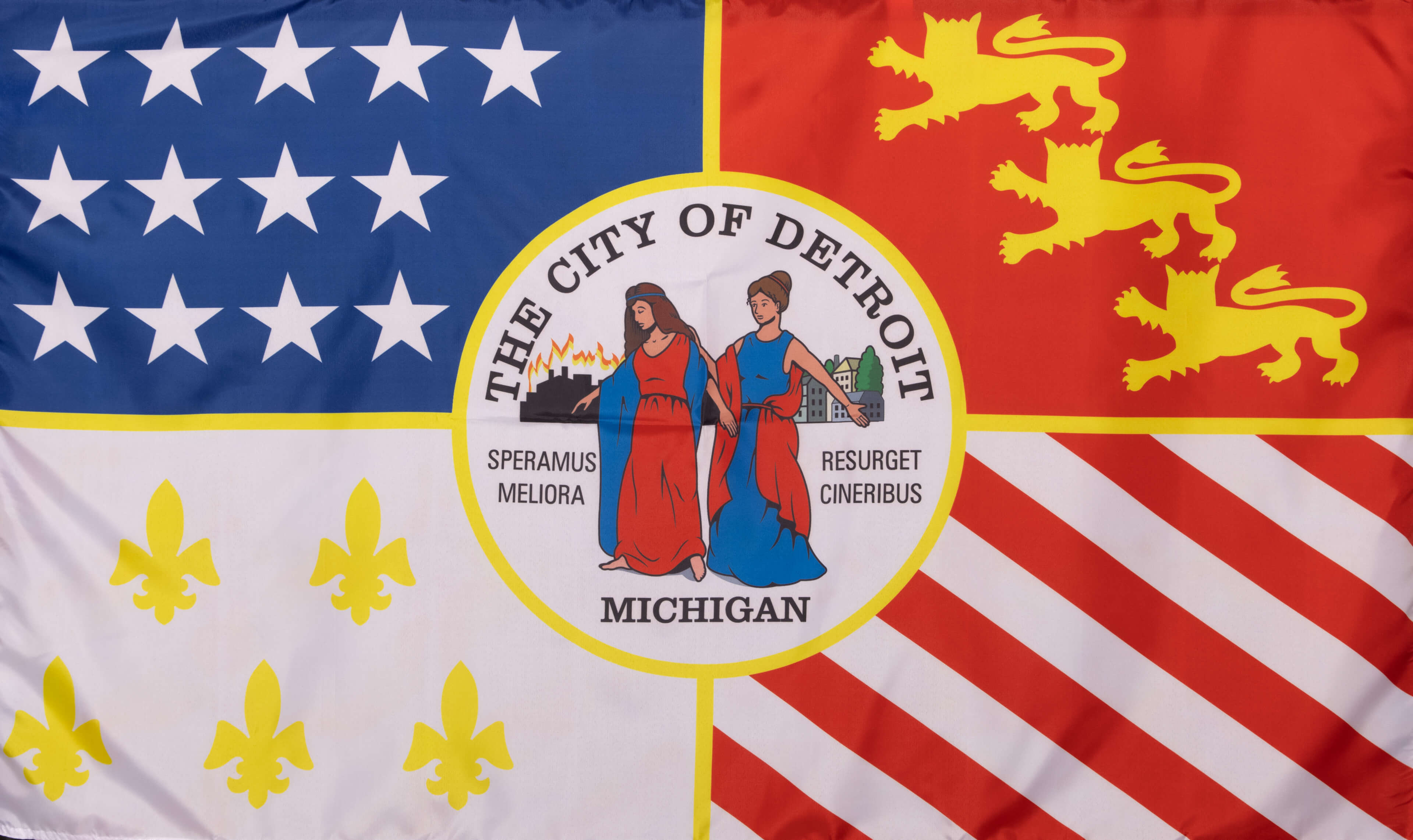
The Flag of the City of Detroit, Michigan
The current Flag of Michigan was designed in 1907, yet it did not become prominent until 1948. The flag has the city seal emblazoned on a quartered background, with each section representing a country that once controlled Detroit. The five gold fleurs-de-lis in the lower hoist quarter represent France, which founded the first fort in 1701. The three gold lions in the upper fly quarter, imitating the Royal Arms of England, represents Great Britain, which controlled the fort from 1760 to 1796. The lower fly has 13 red and white stripes, and the upper hoist has 13 white stars on a blue field, representing the original thirteen colonies of the United States.
Two female figures stand in the circle of the flag. The one on the left weeps over structures burnt down by a fire, while the figure on the right gestures to the new city that will rise in its place. This is a representation of the Detroit fire, which occurred in 1805. The fire caused the entire city to burn, with only one building saved from the flames. Eventually, Detroit prevailed and was reborn from the ashes. The three major American car brands, General Motors, Ford, and Chrysler, all originated in Detroit. World War II also made Detroit an arsenal of the Allies. The Latin mottos on the left reads “Speramus Meliora,” and the one on the right reads “Resurget Cineribus,” respectively meaning "We hope for better things" and "It will rise from the ashes.”
Gifted by June Lee, Chief Operating Officer, Wayne County Airport Authority
<Read More "Flag of Detroit">
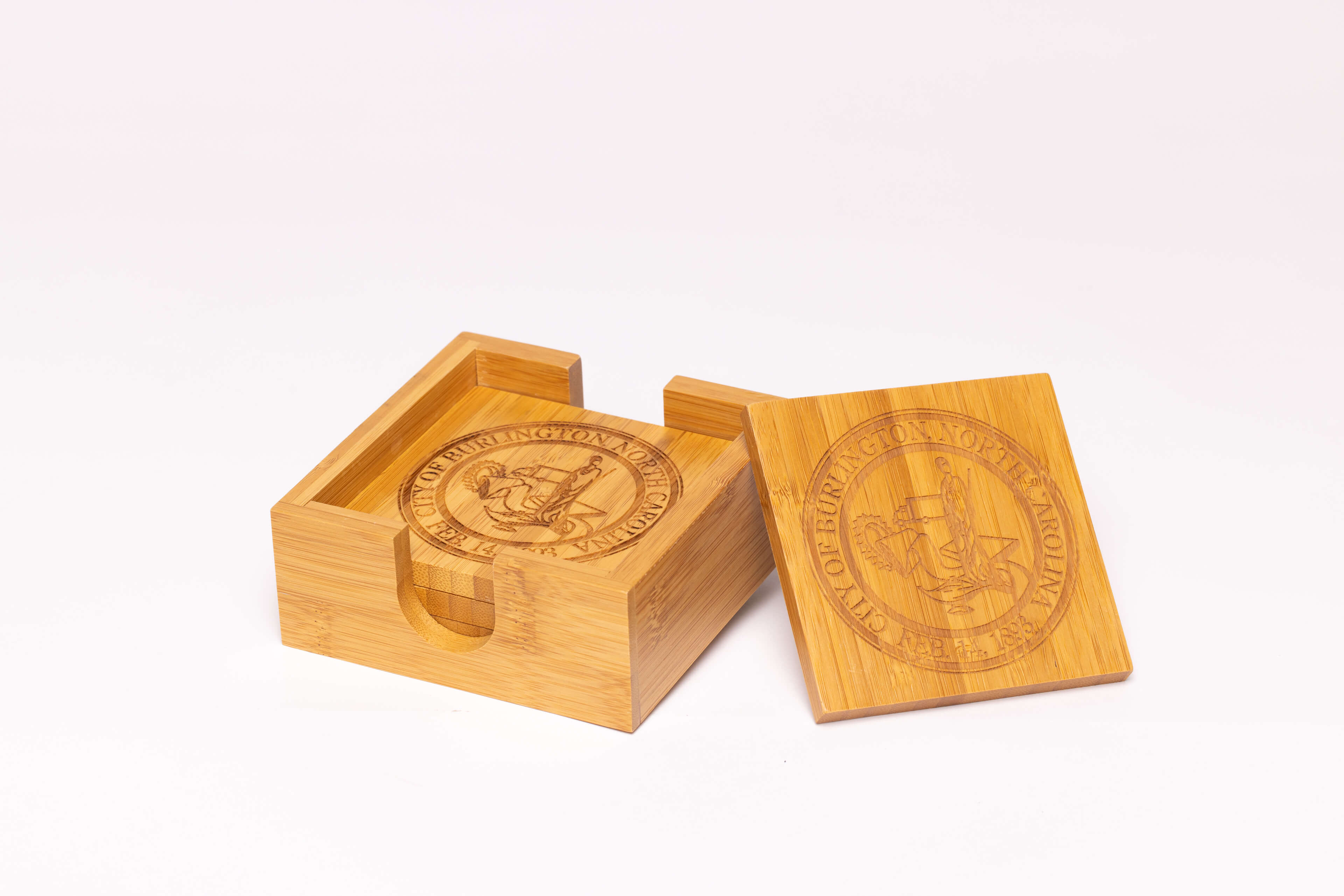
Logo of the City of Burlington, North Carolina
There are many industrially prosperous cities along the crescent-shaped road from Rory, the capital of North Carolina, to Charlotte, the largest city in the state. Burlington, with a population of about 50,000, is one of them. The emblem of the city of Burlington is a dark blue coat of arms. The gears, trucks, and fabric in the coat of arms symbolize the local industry and prosperous businesses. The teacher and oil lamps symbolize a pursuit of education and wisdom.
Gifted by Ian Baltutis, Mayor, City of Burlington
<Read More "Wooden Coasters">
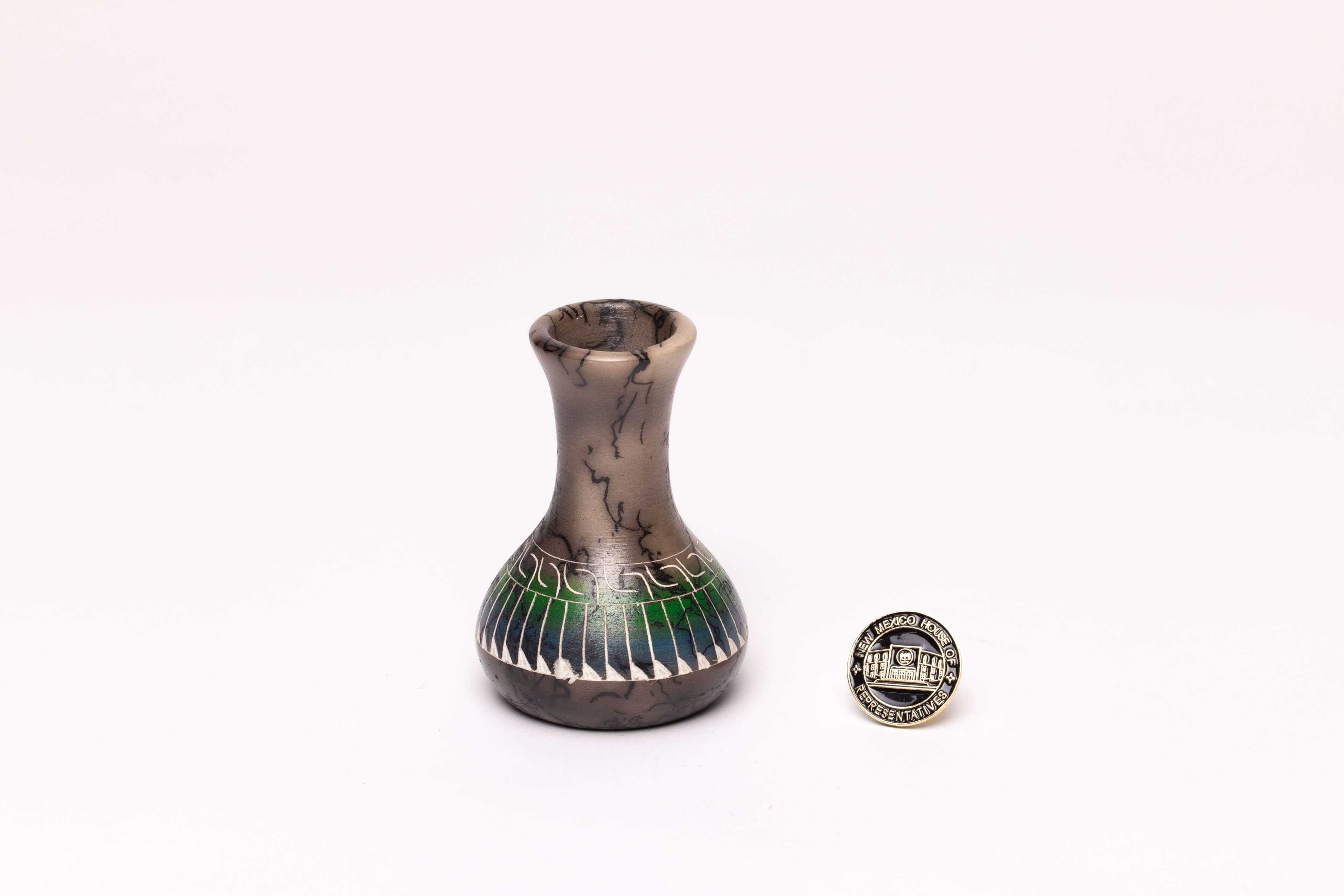
Seal of the New Mexico State Capitol
The design of the logo in the picture differs from the original New Mexico State Assembly emblem; it is the front view of the New Mexico State Capitol. However, the original design can still be found above the gate of the state capitol building. Except for a different design of the outer ring, the Seal of the New Mexico State Capitol is identical to the state seal.
The new Seal of New Mexico is rich in symbols, reflecting the state’s history. Before 1848, New Mexico was actually a territory of Mexico, which was not ceded to the United States until after the Mexican-American War. It was officially established as a state in 1912. For this reason, New Mexico is the only state in the United States with two official languages. The Mexican eagle grasping a serpent in its beak and sitting on a cactus portrays an ancient Aztec myth and symbolizes that New Mexico treasures its Spanish, Mexican, and Native American traditions. The Mexican eagle is shielded by the larger American eagle with wings outstretched, grasping arrows in its talons. This is a symbol of the change of sovereignty in 1846 between Mexico and the United States and also symbolizes America's dominant yet delicate protection of New Mexico and its heritage and culture. Written on the banner at the bottom is "Crescit eundo," Latin for "It grows as it goes."
Gifted by Andrés Romero, New Mexico Senator
<Read More "Native American Ornament of New Mexico/Representative Brooch">
.jpg)
Seal of Newark City, New Jersey
The Newark City Seal and the Great Seal of the State of New Jersey shared a deep connection. The state motto of New Jersey is "Liberty and Prosperity." Similar to the Great Seal of the State of New Jersey, the Newark City Seal has two classically-draped women on either side of a shield, each with its own symbolism. In that State Seal, the woman on the left is named "Libertas," the Roman goddess of liberty, and the one on the right is "Ceres," the Roman goddess of grain. However, in the Newark seal, the figure on the left holds a rod with a liberty cap on top. At her right foot is a cornucopia, which represents prosperity. In her left arm is a head of grain. It seems she alone symbolizes liberty and prosperity. The woman on the right holds in her left hand a scale and her right hand a sword, which presumably represents the scales of justice. In the center of the seal are three plows, representative of New Jersey's agricultural tradition. To the left is a bound bundle of rods, a Roman representation of power and solidarity.
Gifted by Luis Quintana, Vice President, Newark City Council
<Read More "Taoyuan-Newark Commemorative Plate">
Related Collections

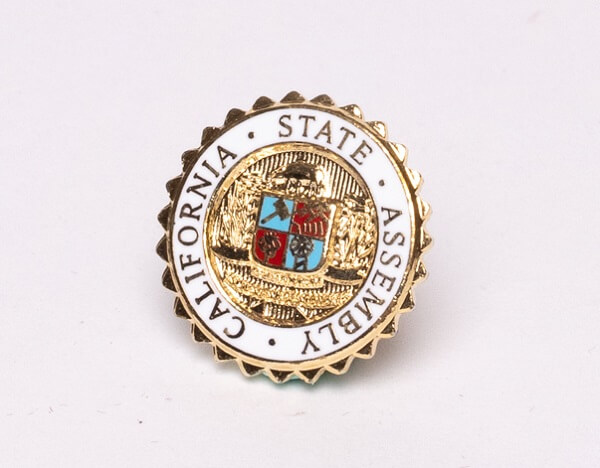
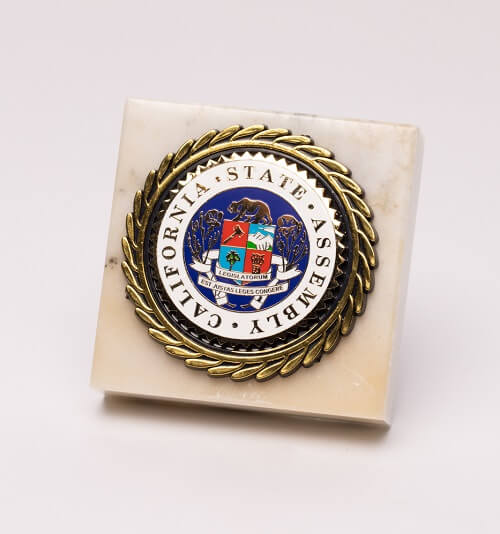
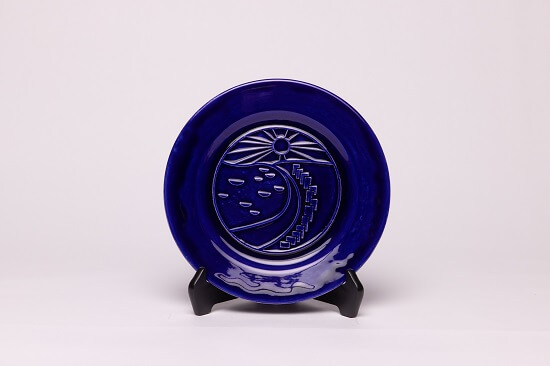
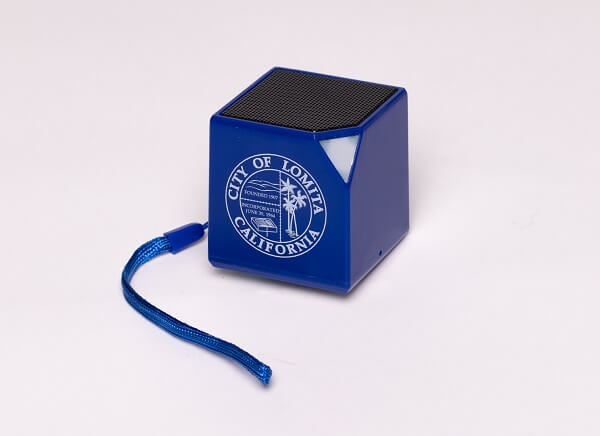
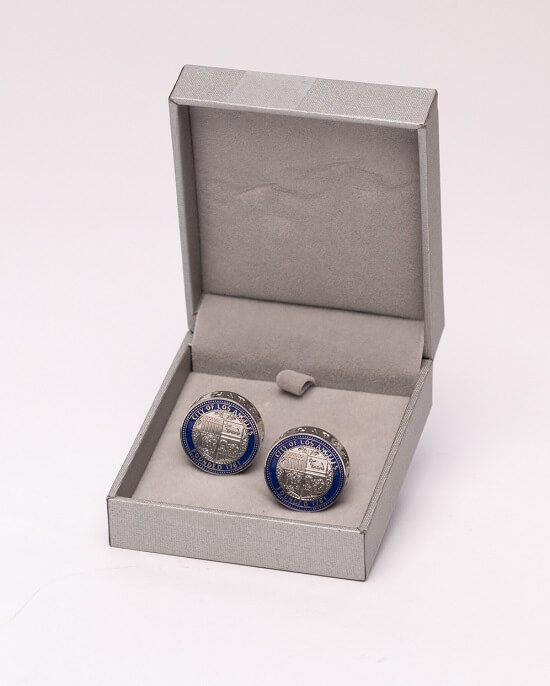
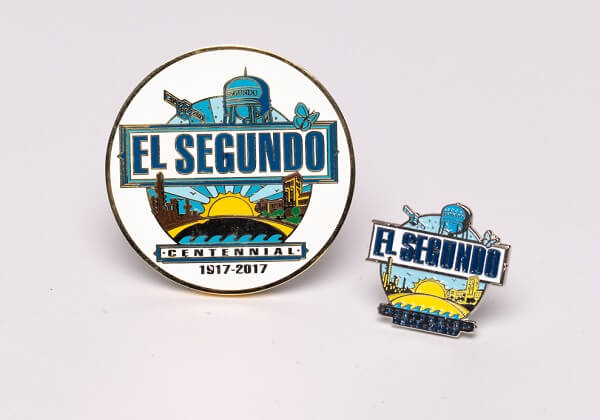
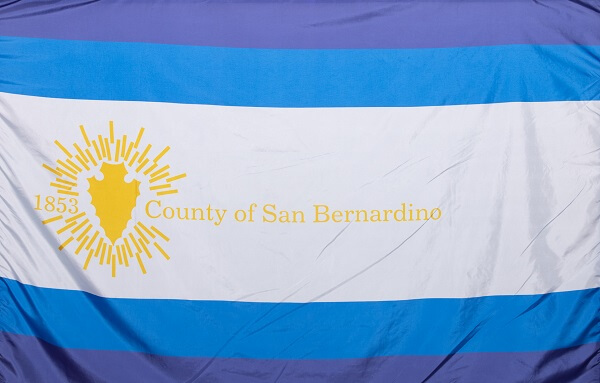
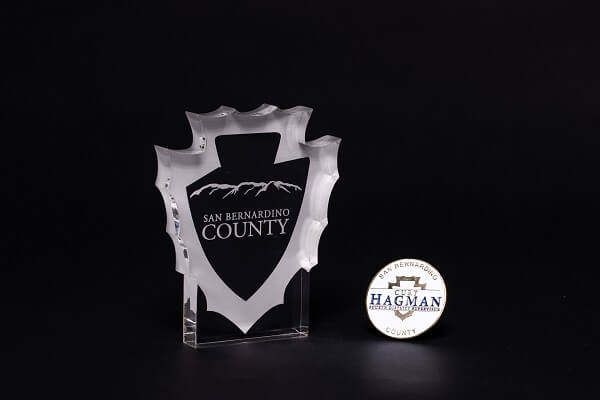
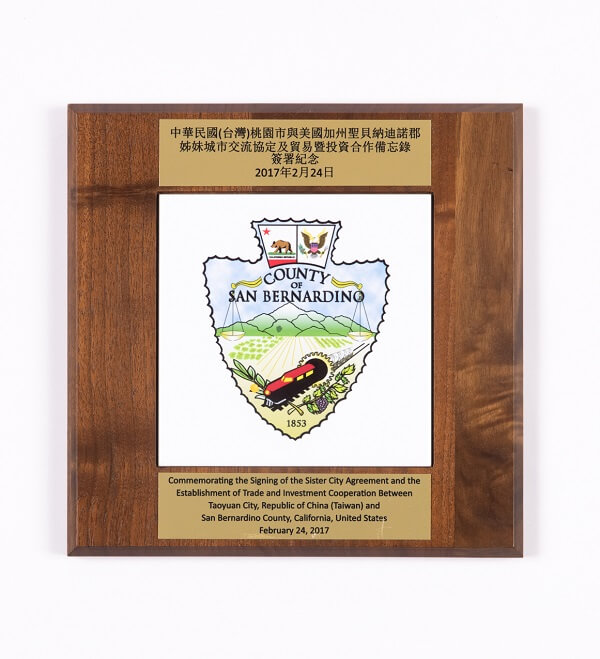
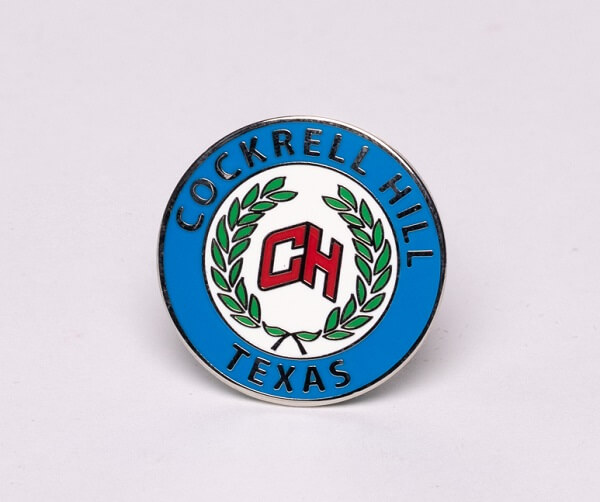
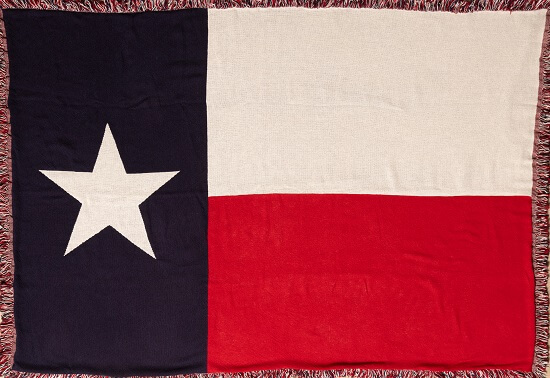
.jpg)
